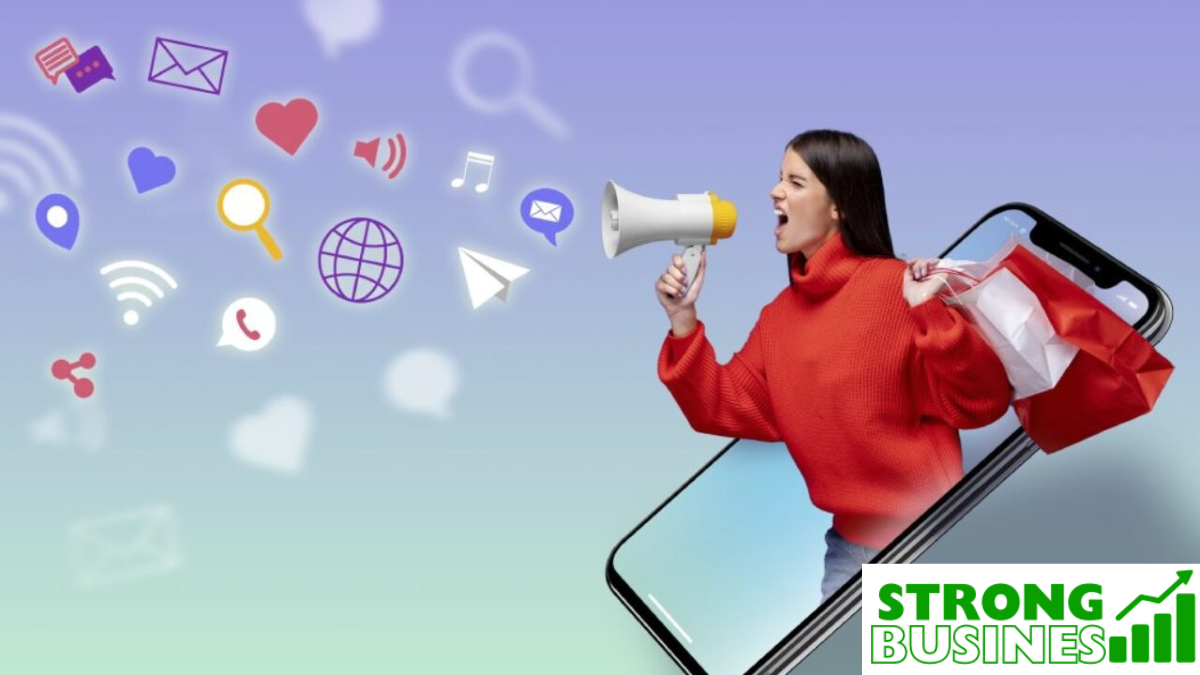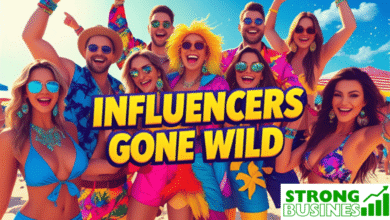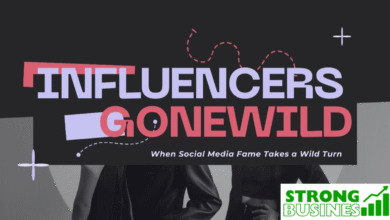influencers gonewild has given rise to a new breed of celebrities known as influencers. These individuals, often with large followings on social media platforms, wield the power to shape trends, influence buying decisions, and even alter public opinion. The term “influencers gonewild” has recently entered the online discourse, representing a growing interest in the unfiltered, often controversial, and sometimes scandalous behavior of these digital personalities. This phenomenon is not just about personal drama or online missteps but speaks to broader cultural shifts in how society engages with fame, privacy, and authenticity.
Origins of Influencer Culture
Influencer culture began as a byproduct of the social media boom. Platforms like Instagram, YouTube, TikTok, and Twitter enabled everyday individuals to share their lives, skills, and opinions with a global audience. Initially, influencers were admired for their relatability and authenticity, setting them apart from traditional celebrities who were often distant and curated by PR teams.
As the influencer space evolved, so did its complexity. Sponsorships, brand deals, and monetization opportunities turned what was once a casual hobby into a lucrative profession. With financial incentives came the pressure to maintain popularity, attract more followers, and keep engagement rates high. This pressure sometimes led influencers to push influencers gonewild what the public now terms “influencers gonewild.”
The Meaning Behind “Gonewild”
The phrase “gonewild” implies a departure from socially accepted norms, often in an unexpected or dramatic way. When applied to influencers, it usually refers to moments when they act out of character, reveal too much personal information, engage in controversial behavior, or break the trust of their audiences. These actions are not always deliberate; in some cases, they stem from the stress of constant public scrutiny or the desire to remain relevant in a competitive space.
Gonewild moments vary in intensity and impact. Some involve minor scandals or missteps that are quickly forgotten. Others lead to long-term damage, including lost sponsorships, canceled collaborations, or permanent bans from platforms. Regardless of the severity, these incidents tend to attract widespread attention and become defining moments in the influencer’s public narrative.
Psychological Pressure in the Influencer Sphere
One of the most under-discussed aspects of influencer behavior is the immense psychological pressure that accompanies digital fame. Influencers often live under a microscope, with their personal lives dissected by followers and critics alike. Every post, story, or comment is subject to public interpretation and backlash.
This continuous exposure can lead to anxiety, depression, burnout, and poor decision-making. The need to always appear perfect or entertaining may cause influencers to make impulsive choices that result in “gonewild” moments. In some cases, influencers intentionally court controversy to boost their visibility, while in others, the behavior is a byproduct of mental health struggles.
Moreover, the feedback loop of likes, shares, and comments creates an addictive dynamic. The dopamine rush from viral content can lead influencers to escalate their actions in search of continued validation, sometimes spiraling into outrageous or destructive behavior.
The Role of Followers and the Audience
Audiences play a significant role in shaping the behavior of influencers. Social media users are quick to celebrate authenticity and vulnerability but are equally fast to judge or cancel influencers when they falter. This paradox creates a confusing environment where influencers are encouraged to share intimate parts of their lives but penalized if those revelations are perceived as problematic.
The term “influencers gonewild” often reflects the public’s fascination with downfall narratives. Many followers enjoy watching influencers rise to fame but also derive entertainment from watching them stumble. This cycle reflects deeper issues within digital culture, where empathy is often overshadowed by spectacle.
The audience’s demand for content also drives influencers to constantly innovate and take risks. As trends shift rapidly, staying relevant becomes a full-time job. In this pursuit, boundaries are frequently tested, sometimes resulting in behavior that aligns with the gonewild label.
Impact on Brand Collaborations and Public Image
For many influencers, their brand is their livelihood. Sponsorships, merchandise sales, and affiliate marketing depend on maintaining a certain image. When influencers engage in behavior considered inappropriate or offensive, the consequences can be severe. Brands may sever ties to protect their reputations, and fans may withdraw their support.
The speed at which controversies unfold on social media leaves little room for damage control. A single misstep can go viral within hours, leaving influencers scrambling to issue apologies or explanations. In the worst cases, the damage is irreparable, and the influencer is left with a tarnished reputation.
However, some influencers manage to rebrand successfully after a gonewild incident. Through sincere apologies, transparency, and strategic content shifts, they regain public trust. These comebacks often depend on the influencer’s ability to demonstrate personal growth and genuine remorse.
Media Sensationalism and the Gonewild Narrative
Traditional media outlets have also played a role in amplifying the gonewild phenomenon. News articles, tabloids, and entertainment blogs frequently highlight controversial influencer moments to attract clicks and engagement. This media coverage can distort reality, framing incidents in a more scandalous light than warranted.
The sensationalism surrounding influencer controversies feeds into a larger culture of outrage and distraction. Instead of fostering meaningful conversations about mental health, accountability, or digital ethics, the focus often remains on gossip and judgment. This approach dehumanizes influencers and reduces complex individuals to simplistic narratives.
Ethical Considerations in the Influencer World
The influencers gonewild trend raises important ethical questions. To what extent should influencers be held accountable for their actions? Where is the line between personal freedom and social responsibility? Should followers and brands expect perfection from individuals who never claimed to be role models?
These questions highlight the evolving nature of digital culture. Influencers are not just content creators—they are public figures, businesspeople, and in some cases, activists. Their actions carry weight, but they are also entitled to privacy and the right to make mistakes. Balancing these realities requires a shift in how society engages with internet fame.
Additionally, platforms bear responsibility in moderating content and protecting both influencers and their audiences. Algorithms that prioritize sensational content may inadvertently encourage problematic behavior. A more ethical digital landscape would involve better tools for mental health support, clearer community guidelines, and a cultural shift toward empathy and accountability.
Cultural Reflections of Influencer Behavior
Influencers gonewild is not just a trend; it is a reflection of broader cultural dynamics. It reveals society’s complex relationship with fame, morality, and authenticity. In the past, celebrities were distant figures whose lives were curated by publicists. Today, influencers bring their followers into their homes, relationships, and emotional struggles.
This intimacy creates a unique bond but also makes the fallout from controversies feel personal. Fans may feel betrayed when an influencer acts out, leading to intense emotional reactions. At the same time, the public’s fascination with drama shows that outrage has become a form of entertainment.
The phenomenon also reflects changing standards of behavior. What was once considered shocking may now be normalized. The definition of “gonewild” continues to evolve, influenced by generational shifts, platform culture, and societal values.
Navigating Fame in the Digital Era
For emerging influencers, the gonewild narrative serves as both a cautionary tale and a guide. It highlights the importance of setting boundaries, prioritizing mental health, and understanding the responsibilities that come with influence. Fame may be more accessible than ever, but maintaining it requires emotional intelligence, strategic thinking, and a strong support system.
Authenticity remains a double-edged sword. While being genuine builds trust, oversharing can backfire. Influencers must learn to navigate this fine line, staying true to themselves without compromising their well-being or alienating their audiences.
Mentorship, education, and community support can help influencers avoid the pitfalls that lead to gonewild moments. Veteran creators, managers, and platforms can play a role in fostering a healthier ecosystem where growth is sustainable and controversy is not the only path to visibility.
The Future of Influencer Culture
As influencer culture continues to mature, it is likely that the public will develop a more nuanced understanding of digital fame. Gonewild moments may still occur, but they may be met with more compassion and critical thinking rather than immediate condemnation.
New platforms and content formats will bring new challenges. Deepfake technology, AI-generated content, and evolving privacy laws may further complicate the influencer landscape. As the lines between real and virtual blur, the need for ethical standards and responsible behavior will become even more pressing.
Meanwhile, audiences are becoming more media literate influencers gonewild followers now recognize when content is curated or designed to provoke. This awareness can help shift the focus away from drama and toward meaningful engagement.
Conclusion
The concept of “influencers gonewild” is a multifaceted phenomenon that encapsulates the highs and lows of internet fame. It reflects personal struggles, societal pressures, media dynamics, and cultural trends. While some view it as a source of entertainment, others see it as a wake-up call to address deeper issues in the influencer economy.





